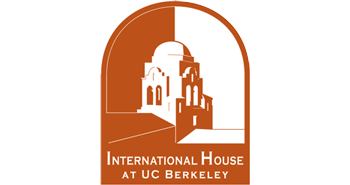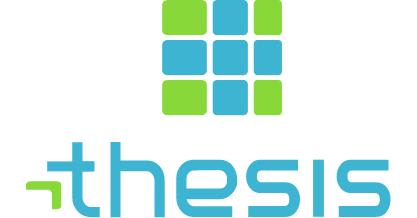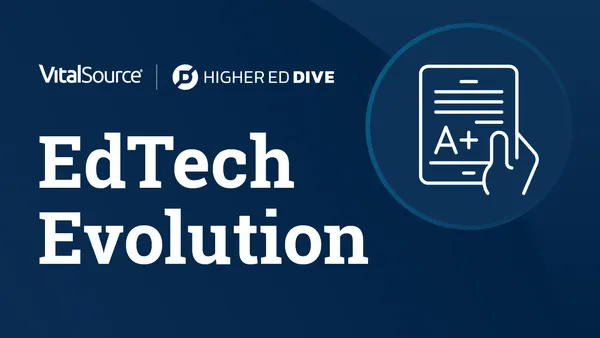From the tangible experiences of students and faculty to a campus' much less-noticed "backend," simple tech tools and developments can have a major and lasting impact on a college or university. No one is more familiar with this than the people working in an institution's tech trenches, so to speak. With a number of issues and hurdles, promising developments, and ongoing trends in play, what does 2016 have in store for higher ed tech?
One week into the new year, with institutions bracing for the beginning of winter/spring semesters, we reached out to five CIOs to get their opinions on all things higher ed tech.
Finances remain a major hurdle
The greatest impediment for tech on campuses remains a financial one. "Finding a way to better fund core functional elements of the IT side of higher ed is becoming more and more difficult," said Andy Jett, CIO at Baker University. "The expectation is that IT is finding and building for what is coming at our faculty and students, but still maintaining the core business functions. Funds to do this get stretched pretty thin and at times put us at risk for functional areas to not work as expected."
"As institutions we are becoming more and more dependent on technology, but in many cases technology costs are in addition to, not in lieu of, other expenses and our costs keep rising," added Raechelle Clemmons, CIO at St. Norbert College.
Of course, this will create a greater need to distinguish the "nice to have" solutions from the "must have," especially if a number of states continue cutting funding. "We simply can't rationalize bringing new technologies to campus unless there is a direct benefit to the advancement of learning," said Fred Tarca, CIO of Quinnipiac University.
For Michael Berman, CIO of California State University's Channel Islands campus, that means being able to demonstrate that the projects and software that money is being spent on have a meaningful impact — a difficult task itself. "In addition, there needs to be a place for early innovation, and by its nature such innovation will often not have demonstrable and scalable impact in its early days," noted Berman.
Just as important as the financial concerns are those of ensuring information security and privacy, which University of Oregon CIO Melissa Woo notes must be balanced with the need for agility and innovation in a campus' tech solutions.
Of course, on a smaller level, institutions will also need to continue grappling with the "digital divide" between instructors who have adopted innovative tactics using web-based and mobile applications, and those who still hit roadbumps with email, Power Point, and basic learning management system use. And increasing mobile device prevalence will also see students' expectations for 24/7, unbuffered Internet access continue to rise.
Greater understanding among new ed tech players shows promise
There's no shortage of entrants in the booming ed tech marketplace, which saw $1.85 billion in investment last year — but there may be an ongoing shift in how those entrants are approaching institutions.
"Despite the frothiness of the ed tech startup business, newer entrants seem to have a more mature understanding of the complexities of using technology to drive sustainable change, and a greater respect for supporting the mission of education rather than 'disrupting' it," said Berman. "Vendors and developers have made massive improvement in understanding and respecting the goals of accessible technology - while there is still a long way to go, I have seen more providers willing to invest in universal design and improved accessibility."
Tarca, meanwhile, is impressed with an incoming generation of faculty that have used technology their entire lives, with these tech-savvy instructors capable of providing increased benefit to students via their comfort with — and demand for better — tech solutions.
On a more specific level, Jett sees potential among new online learning environment providers, as well as vendor efforts to help develop affordable retention systems that utilize LMS and SIS data. "I think those efforts will have great ROI for a school," he said. The analytics made possible by those systems, of course, provide a foundation to provide early academic interventions to at-risk students.
Meanwhile, a Domain of One's Own and personal APIs could place students in greater control of their personal data and put them at the center of learning. Additionally, said Clemmons, it facilitates student digital literacy, "which I think our institutions need to address as a core competency in a 21st century education."
CBE and other alternative pathways continue trending
You can't talk trends in higher ed today without competency-based education being brought up, and along with the assessment of student learning outcomes, Clemmons sees merit in the heavily tech-dependent alternate pathways. However, with the attention they've garnered as "fixes" for higher ed, both face the "magic bullet" pitfall that plagued MOOCs a few years ago.
Still, institutions shouldn't rely on one extreme over another, going "all in" on alternative approaches or ignoring them in favor of the "traditional" four-year model.
"I strongly suspect that the four-year college education of the (not too distant) future will be a nicely blended version of the two that looks very little like either extremes do today," said Clemmons. "Because it will necessitate a fundamental rethinking and redesign of the educational experience, rather than an incremental addition or subtraction from one of today's models."
On that note, Berman's assertion that higher ed tech leaders will face more of a challenge to "prove it" when it comes to new solutions — especially as the marketplace for them balloons —is a trend itself. Expect to see fewer institutions adopting whatever hot tech comes along, giving more thought to accessibility and integration on their campuses. This trend will also provide a greater need for quality training and incentives, noted Jett.
And, with the continuing adoption of analytics, expect to see institutions continuing to grapple with data security. "Privacy, loss of data, and all of the challenges that security brings needs to grow stronger legs and greater acceptance," said Tarca.
Would you like to see more education news like this in your inbox on a daily basis? Subscribe to our Education Dive email newsletter! You may also want to read Education Dive's look at 5 higher ed trends to watch in 2016.













